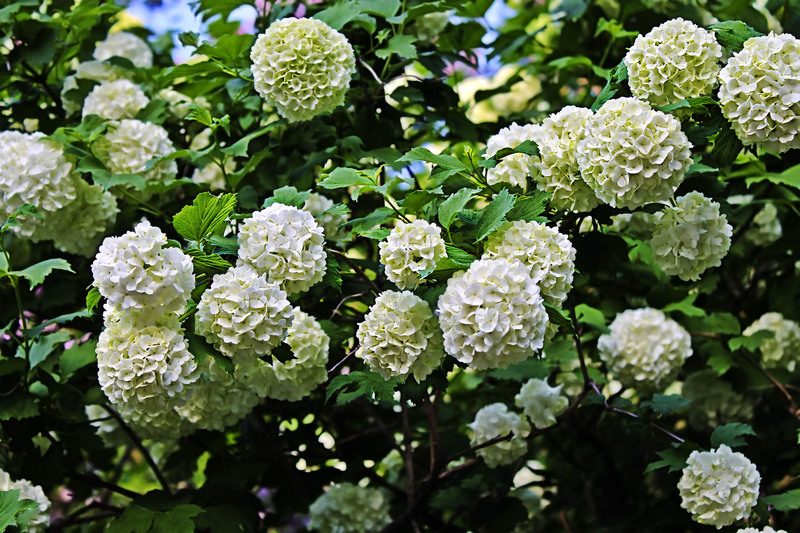The role of biodiversity in gardens to address climate change
Posted on 21/09/2025
The Role of Biodiversity in Gardens to Address Climate Change
How can your backyard become a tool against the climate crisis? The answer lies in harnessing the power of biodiversity in gardens. As climate change accelerates, gardens -- whether urban, community, or residential -- hold untapped potential for environmental stewardship. This comprehensive guide explores how nurturing diverse garden ecosystems can not only beautify neighborhoods, but also mitigate climate change impacts.
Understanding Biodiversity and Its Importance in Garden Ecosystems
Biodiversity refers to the variety of life -- plants, animals, fungi, and microorganisms -- in a given environment. In the context of garden biodiversity, this means growing a wide range of species to create a balanced, resilient, and self-sustaining mini-ecosystem right at home.
Why Is Biodiversity Important for Gardens?
- Resilience: Biodiverse gardens are more resistant to pests, diseases, and climate extremes.
- Balance: Diverse species provide natural checks and balances, fostering healthier plants and soils.
- Soil Health: A mixture of plant roots and decomposing matter supports robust microbial life, crucial for soil fertility and carbon sequestration.
- Habitat Creation: Varied habitats support threatened pollinators, birds, and other beneficial wildlife.

How Can Biodiverse Gardens Combat Climate Change?
Climate change is driven by rising greenhouse gas emissions, unsustainable land use, and loss of natural habitats. Garden biodiversity offers practical solutions:
- Carbon Sequestration: Plants and soil organisms extract and store atmospheric carbon dioxide, a key greenhouse gas, helping to stabilize the climate.
- Adaptation to Extreme Weather: Diverse plantings ensure some species survive drought, flood, or pests, reducing garden failure and resource use.
- Reduced Urban Heat: Green spaces with varied layers of vegetation cool the air, counteracting urban heat islands and lessening energy needs for cooling.
- Water Management: Deep-rooted plants improve soil structure, reducing runoff and promoting groundwater recharge, which is essential as climate patterns shift.
- Supporting Ecosystem Services: Biodiversity boosts pollination, pest control, and nutrient cycling -- all essential for resilient food systems against climate stress.
Key Components of Biodiverse, Climate-Resilient Gardens
1. Plant Diversity
A broad variety of species, from native wildflowers to edible plants and trees, maximizes ecological benefits. Native species are especially critical, as they are well-adapted to local soils and weather, support local fauna, and typically require less water and maintenance.
2. Structural Layers
- Canopy: Tall trees provide shade, cool the microclimate, and serve as carbon sinks.
- Understory: Shrubs and small trees offer intermediate layers and habitat diversity.
- Herbaceous Layer: Perennials, grasses, and annuals supply nectar, pollen, and ground cover for soil protection.
- Ground Layer: Mosses, lichens, and mulch limit erosion and bolster soil biodiversity.
3. Habitat Features
Incorporating ponds, log piles, insect hotels, and stone features creates microhabitats for insects, amphibians, and reptiles. These contribute to a web of life essential for natural pest control and pollination.
4. Soil Health
Healthy, living soil teems with bacteria, fungi, earthworms, and nematodes. Enriching soils with compost, leaf litter, and biochar increases organic matter and supports greater carbon capture -- a major way gardens can address climate change through biodiversity.
Practical Strategies to Increase Biodiversity in Your Garden
Choose Native and Climate-Resilient Species
- Research local flora: Native plant guides help select varieties naturally adapted to your region's climate.
- Opt for diversity: Mix trees, shrubs, groundcovers, and flowers -- ideally aiming for species flowering at different times to provide year-round food for pollinators.
Build Healthy Soil
- Add organic matter: Compost, mulch, and green manure nourish soil life and support carbon sequestration.
- Limit chemical use: Synthetic fertilizers and pesticides harm beneficial microbes and insects, weakening ecosystem services.
Create Wildlife Habitats
- Leave wild corners: 'Untidy' areas with leaf litter and brush provide safe spaces for ground-nesting bees and overwintering insects.
- Add water: Even small ponds or birdbaths provide crucial drinking and breeding sites in increasingly dry climates.
- Plant hedgerows or layered plantings: These support birds, beneficial insects, and natural pest predators.
Practice Sustainable Water Management
- Collect rainwater: Installing barrels and swales reduces reliance on mains water and prevents runoff.
- Plant densely: Filling gaps with ground covers reduces soil evaporation and discourages weeds, limiting the need for chemical controls.
The Scientific Evidence: Biodiversity's Role in Carbon Sequestration
Studies confirm that richer biodiversity in both plant and soil life significantly improves ecosystem functions related to climate change mitigation:
- Research published in Nature demonstrates that gardens with higher plant diversity store more carbon both above and below ground.
- Soil biodiversity boosts the formation of stable carbon compounds, preventing greenhouse gases returning to the atmosphere.
- Urban green spaces rich in plant and insect life can absorb up to 25% more CO2 than monoculture lawns or sparsely vegetated areas.
Biodiversity in Urban Gardens: Cooling Cities and Improving Air Quality
Urban gardens play a pivotal role in cooling and cleaning city air, especially as global temperatures rise. Densely planted green spaces:
- Reduce heat: Trees and shrubs shade surfaces, lower air temperatures, and dissipate heat through transpiration.
- Filter pollutants: Leaves and roots capture dust, harmful chemicals, and carbon dioxide, directly improving public health.
- Support urban resilience: During extreme weather, diverse plantings protect soil from erosion and absorb floodwaters.
Pollinator Diversity: Supporting Food Security Amidst Climate Change
The diversity of pollinators in gardens -- bees, butterflies, beetles, and birds -- is directly tied to local and global food security. Climate change threatens these allies through habitat loss, extreme temperatures, and pesticide use.
- Continuous blooms: A diverse garden offers nectar and pollen throughout the growing season, supporting healthy pollinator populations.
- Plant diversity: More plant species mean more food types and nesting materials for a wider range of pollinator species.
- Fewer chemicals: Biodiverse, naturally balanced gardens minimize the need for synthetic pesticides, protecting pollinators' health.
The Social and Economic Benefits of Garden Biodiversity
Investing in biodiversity in home and community gardens delivers far-reaching social and economic returns:
- Improved well-being: Exposure to diverse greenery lowers stress, increases mental health, and strengthens community bonds.
- Cost savings: Healthier, resilient gardens reduce maintenance, irrigation, and pest control costs over time.
- Community food security: Diverse gardens can supply local, nutritious food in the face of climate-related crop failures.
Case Studies: Biodiversity-Rich Gardens Making a Climate Difference
Urban Forest Gardens in Berlin
In Berlin, forest garden projects have transformed vacant lots into lush havens filled with fruit trees, berry bushes, wildflowers, and vegetables. These biodiverse urban gardens enhance carbon capture, improve stormwater management, cool neighborhoods, and provide food -- all while supporting dozens of bird and insect species.
Pollinator Pathways in North America
The Pollinator Pathway movement encourages residents to plant native blooms, reduce lawn size, and connect gardens across urban landscapes. Not only has it boosted local bee and butterfly numbers, but it has also improved soil health and contributed to community climate adaptation efforts.
Common Myths About Garden Biodiversity and Climate Change
-
Myth: Biodiverse gardens are messy and hard to maintain.
Reality: Thoughtful design using native plants can reduce upkeep while naturally suppressing weeds and pests. -
Myth: Small gardens don't make a difference for climate change.
Reality: Even small plots, balconies, and rooftop gardens sequester carbon, cool microclimates, and provide habitats. -
Myth: Biodiversity is only about protecting rare species.
Reality: Everyday garden plants, insects, and microbes all contribute to ecosystem functioning and climate resilience.

How to Get Started: Actionable Steps for Gardeners
- Assess your plot: Identify existing plants, soil types, and microclimates.
- Plan for diversity: Mix different species, flower shapes, heights, and bloom times.
- Use local resources: Join native plant societies or community garden groups for seeds, knowledge, and support.
- Go organic: Eliminate synthetic chemicals to encourage natural interactions and beneficial wildlife.
- Monitor progress: Track the increase in pollinators, soil health, and resilience to weather extremes over time.
Conclusion: Every Garden Matters in the Fight Against Climate Change
In sum, the role of biodiversity in gardens to address climate change is multifaceted and profound. From sequestering carbon to supporting pollinators and providing urban cooling, a biodiverse garden acts as a vital climate tool. By embracing diverse, resilient plantings and nurturing living soil, every gardener can contribute meaningfully to the global response to climate change -- while enjoying the beauty and bounty of a thriving green space.
If you care about the future of our planet, start by enriching the biodiversity of your own garden. Your patch of earth can help tip the balance toward a more stable climate for generations to come.
Key Takeaways:
- Biodiversity in gardens supports climate resilience, carbon storage, and wildlife habitat.
- Diverse plantings improve soil health, water management, and food production.
- Even small, urban gardens contribute to cooling, clean air, and climate adaptation.
- By prioritizing native and varied species, gardens become powerful allies in the fight against climate change.

